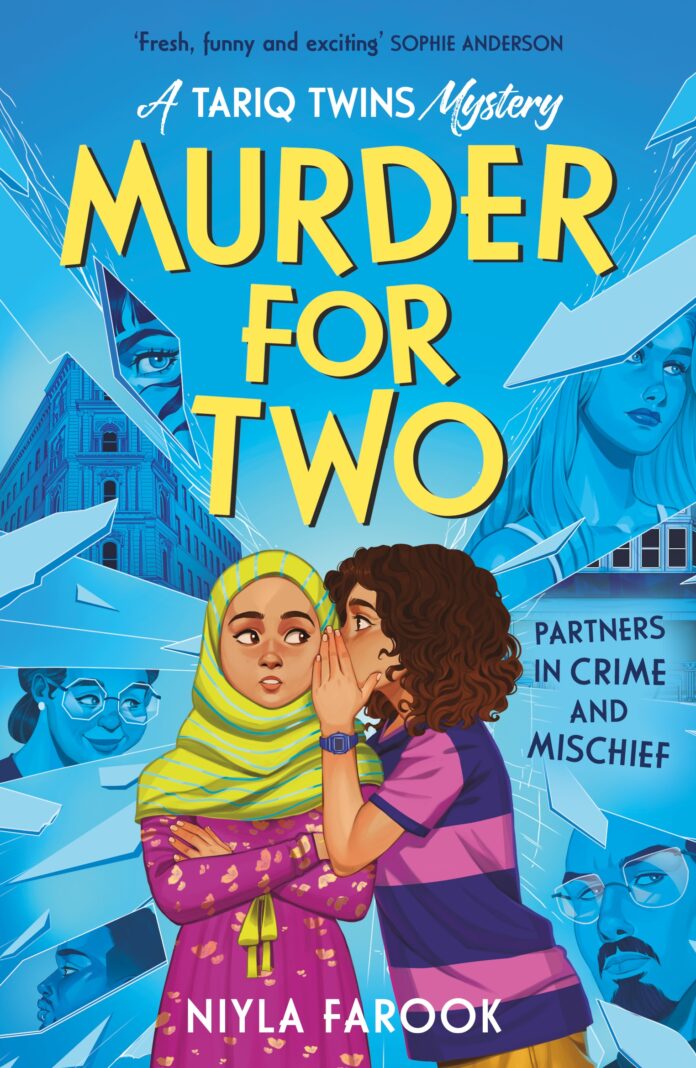Where does the inspiration for writing a mystery come from? Author Niyla Farook shares her inspiration with us in today’s blog.

I read Agatha Christie books and watched Murder, She Wrote when I was much too young.
As a child – specifically in the middle grade age range – I was always interested in mysteries – be they missing car keys or an unsolved murder. And while I did watch and read child-appropriate mysteries – Scooby Doo and Enid Blyton and Nancy Drew books – I always found murders most thrilling. I would read Agatha Christie books past bedtime and stubbornly try to figure out who the murderer before the big reveal at the end (I’d never guess correctly, and the red herrings would always get under my skin!). The same would happen when I’d play Cluedo (and it still does!), where I’m terrible at guessing the murderer while having the time of my life. Maybe that’s what I found most thrilling.
And maybe that’s why I wrote a middle grade murder mystery.
I always knew I loved murder mysteries, and the structure of said mysteries were so familiar to me; I just didn’t think I could write one.
But once I had the image of these brown, Muslim, estranged twins, one wearing a hijab and one with wild curly hair stumbling upon a murdered woman, I researched murder mystery writing tropes to start with, and it all felt familiar (and also very intimidating). But I wasn’t searching for familiarity or intimidation. I was searching for tropes so I knew what to include and what not to include, a way to put everything I know and love – including aspects of my culture and religion – into a murder mystery. Writer’s Digest very helpfully has a list of the 21 Popular Mystery Tropes for Writers – Writer’s Digest. I took from that list – as well as from the murder mysteries I’d loved as a child (and teenager and adult).
I’m very pleased that I never outgrew my love of murder mysteries – as a teenager, I’d watch Veronica Mars and as an adult, I’d devour Criminal Minds. And so, I used all that I knew about mysteries to craft my own. Because I’m utterly terrible at guessing the murderer in any murder mystery medium, I very intensely plotted Murder for Two. It was a gruelling period of trying to keep track of the suspects’ whereabouts, motives and red herrings. It was exhausting but also so fulfilling. Despite all that, the characters and their dynamics came about very organically – they were so real and unique in my head, something I strode to convey onto the pages. A lot of the dialogue wrote itself; it was unplanned which was a nice contrast to my intense plotting on the murder and motive side of things.
With Murder for Two, I put the tropes from all my places of inspiration into a blender with modern and fresh characters set in a small West Yorkshire town. By doing this, I realised the one thing I never saw in all the brilliant murder mysteries I read, watched and played as a child was myself. Characters who look like me, speak like me, dress like me. And that’s what I set out to achieve – or rather, what my inner child set out to achieve – by writing Murder for Two. It was a cathartic but adrenaline-filled journey, and I hope that people of all ages connect with the characters and the mystery – and feel that same frustration I feel at failing to guess the murderer!
Views expressed do not necessarily reflect those of the Federation.

